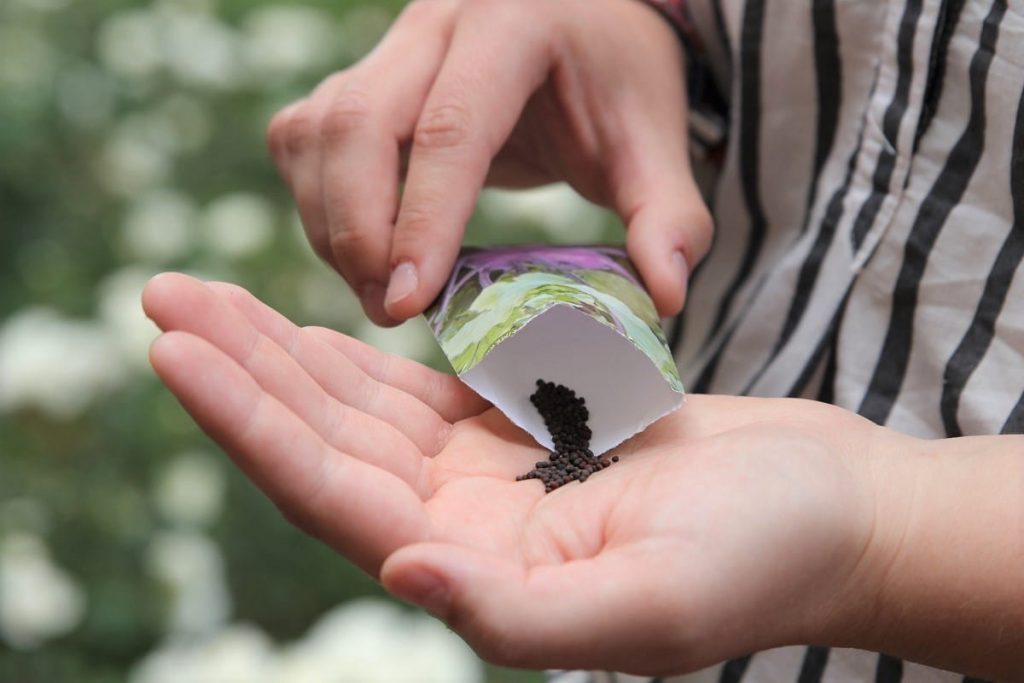Last updated on October 23rd, 2023 at 08:45 pm
Growing vegetables in advance is always necessary when the plants do not meet the climatic conditions. Thus, growing kohlrabi is not mandatory, but it can make sense.
- Juicy meat, protection from animals or intensive crop rotation are reasons for preplanting
- preplanting can start between February and March
- cold temperatures harm the young plants of kohlrabi
- after about six weeks they are ready for the open field
Contents
- 1 Pre-planting kohlrabi
- 2 When to grow kohlrabi in advance?
- 3 Pre-growing kohlrabi step by step
- 4 Sowing kohlrabi
- 5 Transplant kohlrabi
- 6 Frequently asked questions
- 7 What do I need to consider for crop rotation?
- 8 What happens when young kohlrabi plants freeze?
- 9 How much time does the cultivation take?
- 10 Author
Pre-planting kohlrabi
Growing kohlrabi in our region is possible without preplanting. Nevertheless, there are good reasons if you want to grow kohlrabi in advance.
- juicy flesh
- protection from pests
- intensive crop rotation
The shorter the kohlrabi matures before harvest, the juicier the vegetable flesh. Thus, if you want to harvest particularly tasty plants, you should preplant the vegetable. At the same time, the young plants are susceptible to pests. Snails, mice, squirrels and co. consume the tasty vegetables. However, if the plants are already larger, the voracious animals can not destroy the entire harvest. At the same time, pre-growing is recommended if your own garden is to be used intensively. Then pre-growing and quick harvest stimulate the nutrients in the soil.

When to grow kohlrabi in advance?
The right time to advance kohlrabi is February to March. Then gardeners can advance kohlrabi in the greenhouse or inside the house. There it can grow relatively large and then move to the garden bed for a few more weeks.
Pre-growing kohlrabi step by step
When pre-growing kohlrabi, you should take into account a few tips. Consequently, here is a guide to preplant kohlrabi appropriately at the right time.
Sowing kohlrabi
When you start sowing kohlrabi, you should fill the substrate into pots, tubs or window boxes. This is a growing soil. The pots should have a diameter of about 5 cm. Next, sprinkle the seeds of kohlrabi into the substrate. Then put some soil on top and press it. Last but not least, moisten the soil.

Tip: Do not use a watering can to moisten the kohlrabi seeds. Use a spray bottle to moisten the soil and seeds professionally.
The next step is to put a transparent film over the pots. You place these in a sunny place. The soil must remain permanently moist. The spray bottle is suitable for this purpose.
Pricking out kohlrabi
After four weeks, the kohlrabi plants can be pricked out. In addition to the typical cotyledons, the plants have at least two more leaves. Then it is time to prick the kohlrabi. To do this, separate the seedlings and replant them individually.
Note: Use pricking to weed out diseased plants. Shortening the roots can also accelerate growth.

Transplant kohlrabi
After pricking out, the plants should continue to develop for a while in their usual environment. After about six weeks, it is then time to transplant the kohlrabi into the garden bed at the end of April. If the soil is sandy, enrich it with compost beforehand to create the optimal nutrient conditions for kohlrabi.
Tip: Between the rows and plants should be a distance of 25-30 centimeters.
Frequently asked questions
What do I need to consider for crop rotation?
For intensive crop rotation, it is advisable to grow kohlrabi in advance. A longer cultivation phase is recommended. Too short a phase increases the risk of diseases in the soil.
What happens when young kohlrabi plants freeze?
Cold spells should be limited to short periods when growing kohlrabi in advance. This is because young kohlrabi prefer warmth. If they freeze, they will no longer form tubers. Consequently, it is recommended to maintain minimum temperatures of 14 degrees. Ideally, the temperature during pre-growing is 20-22 degrees.
How much time does the cultivation take?
Growing usually begins in February and March. After six weeks, the seedlings are ready for their life in the wild. If you start later in the year, four weeks are also enough.


